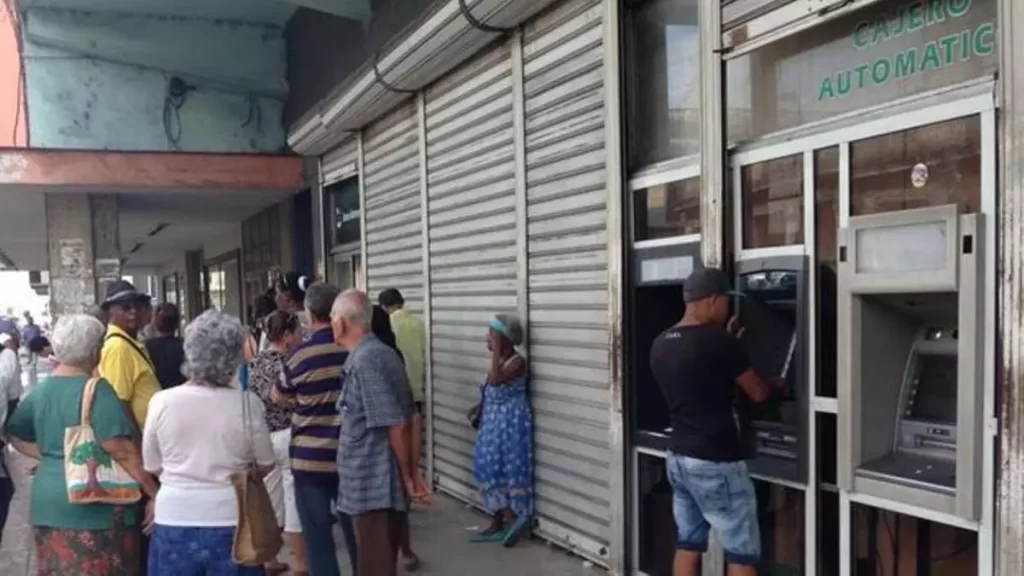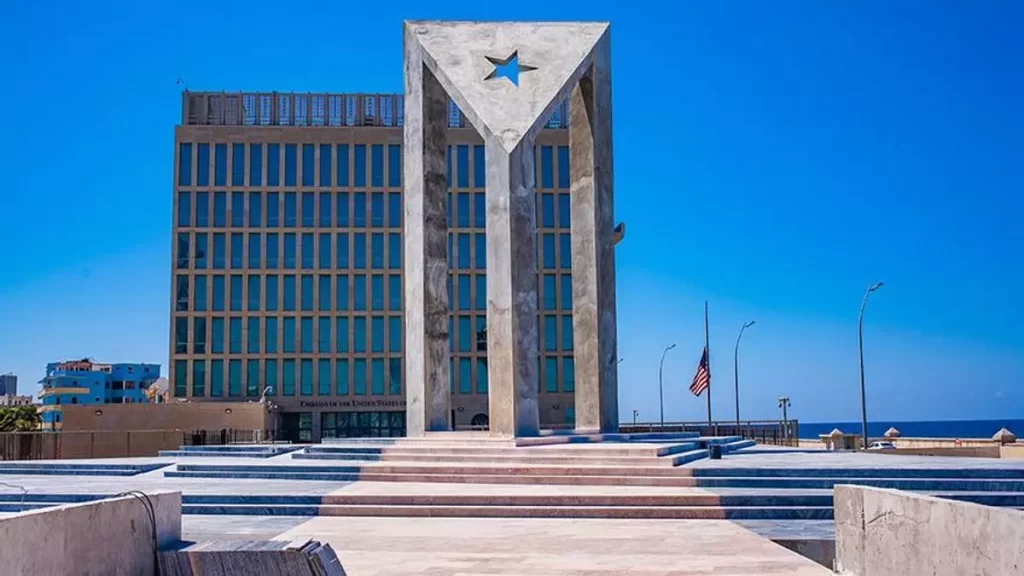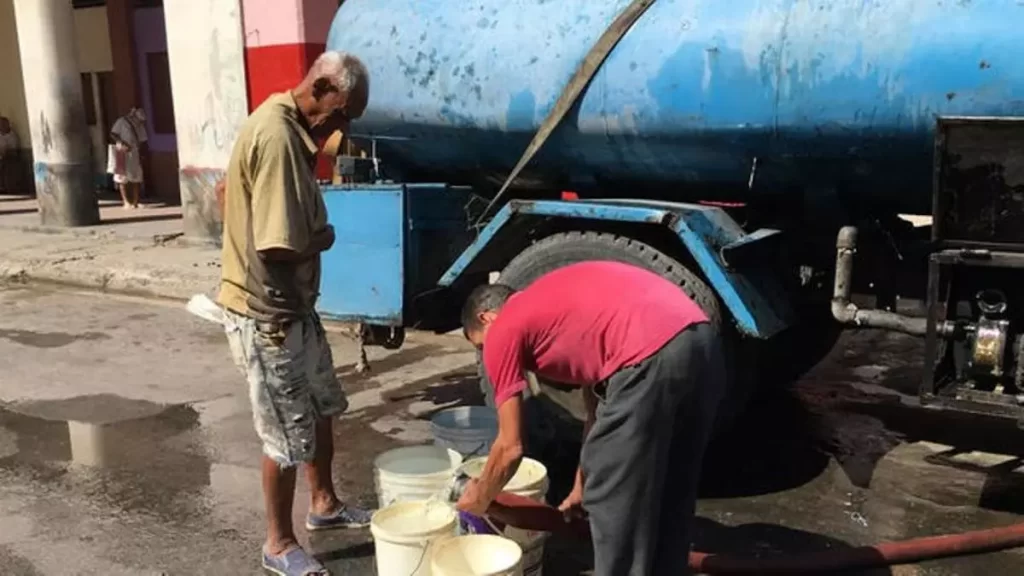
![]() 14ymedio, Reinaldo Escobar, Havana, 15 April 2024 — The most depressing arguments against the possible scenarios presented here actually taking place can be summed up in two popular expressions in plain and simple language: “You know that these people do whatever they want” and “anything can happen here at any time.”
14ymedio, Reinaldo Escobar, Havana, 15 April 2024 — The most depressing arguments against the possible scenarios presented here actually taking place can be summed up in two popular expressions in plain and simple language: “You know that these people do whatever they want” and “anything can happen here at any time.”
Putting aside these truisms, another (though unlikely) scenario which would be one in which Miguel Díaz-Canel successfully completes a second term as president. In this instance, we must try to address what academics refer to as “the scientific problem” as expressed in the next question: Who will be appointed president of the Republic of Cuba in April 2028?
With four years to go, it seems premature to make predictions. However, this is the time when movement — or rather big shifts — could happen, leading to “the great designation” that will come as a no surprise to anyone.
In any presumably democratic country where presidential elections are held, speculation about the possible winner is based on how seemingly willing the electorate is to choose one candidate over several 0thers. To win the voters’ approval, politicians must campaign for office through the media and at public events. They offer campaign promises and eventually prevail over their opponents.
That simply does not happen in Cuba. Nominating commissions made up of organizations claiming to represent civil society but which are controlled by the Communist Party are the ones who nominate candidates for executive office. In the ten times that the National Assembly of People’s Power has met, not a single candidate has ever been rejected at the polls. It is the members of the newly chosen assembly who vote to approve the candidate proposed by the presidential nominating commission as President of the Republic.
The joke that bests reflects this situation would be one that asks, “What do polling results show?”
Current electoral law mandates that, to be president, a candidate must be a member of the National Assembly, no older than sixty at the start of his or her first term in office and no younger than thirty-five. Each term is to last five years and no one may serve for more than two terms. These strictures are enshrined in the Cuban constitution.
Since the president is inevitably the Communist Party first secretary, it is obvious that the designee must be a party member as well as an official who already holds positions in the party and government, though that is not stipulated anywhere in writing.
Miguel Díaz-Canel’s second term in office ends in April 2028 so it is relatively easy to figure out who would meet the the age requirements by that date in order to be eligible. The data is publicly available. One need only type “Parlamento cubano” into the Google search engine and add a name.
The figures below are current as of April 15, 2024.
Of the 471 names currently on the roster of National Assembly members (this includes those who have died, resigned or been fired), only 348 would meet the presidential age requirements in 2028. To be more precise, of the current members, ninety-three would be over sixty years of age and thirty would still be under thirty-five by that date.
Members of the the eleventh National Assembly will be take office shortly before the next president is chosen. One can assume, however, that it is unlikely that a “new arrival” — a junior legislator — would be elected to high office. Therefore, any analysis or speculation about who the most likely candidates for president might be will have to be done based on the current list of Assembly members.
Of the 348 members who will meet the age requirement, one belongs to the Politburo and three to the Secretariat. Nine hold the post of first secretary of a provincial wing of the Communist Party. One is a deputy prime minister and another is a government minister. Fourteen are members of the Council of State, though four of them hold none of the other positions previously mentioned.
Keeping in mind that some of them hold more than one of the positions mentioned here, we are talking about twenty-seven potential presidents.

Of those twenty-seven, the ones who seem to have the best chances are these six members of the Communist Party Central Committee:
- Gladys Martínez Verdecia (1970), who is also a member of the Politburo and first secretary of the Communist Party in Artemisa province.
- Joel Queipo Ruiz (1971), member of the Secretariat and head of its Economic and Productivity Department.
- Jorge Luis Broche Lorenzo (1970), member of the Secretariat and head of the Department of Social Services
- Félix Duarte Ortega Martínez (1974), member of the Secretariat and president of the National Association of Small Farmers.
- Beatriz Johnson Urrutia (1969), first secretary of the Communist Party in Santiago de Cuba province and member of the Council of State.
- Jorge Luis Perdomo Di-Leila (1970), deputy prime minister.
Assembly member Susely Morfa (1982) could join the list if she does well in her new job.
The next four years could see promotions and dismissals that require significant revisions to this list. But the most radical reform, the one that could upend everything, would be a decision to change the age requirement.
With all that being said, let’s take closer look at the first two depressing realities mentioned at the beginning of this piece.
Article 228 of the Cuban constitution stipulates that,”when the reform refers to… the powers or the term of office of the President of the Republic… ratification is also required by a vote in favor by the majority of electors in a referendum called for such purposes.”
There is no obligation to put any changes to the age requirement to a referendum since only “the powers” and “the term of office” are explicitly mentioned, not the requirements. Therefore, it is older people, the ones already ensconced in powerful positions, who might entertain presidential ambitions. They might be tempted to promote this seemingly minor but decisive modification but they would have to propose it in the next four years, which is why it pays to be attentive.
Let’s say they propose raising the maximum age for a first-term president to seventy. That would still rule out the old guard, all in their eighties or nineties, but the pack of wolves highest up in the food chain would presumably still be in the running.

Of the thirteen apostles of continuity, these six members of the Politburo are first in line:
- Roberto Morales Ojeda (1967), who is also the Central Committee’s secretary of organization and deputy prime minister.
- Manuel Marrero Cruz (1963), who now serves as prime minister.
- Lázaro Alberto Álvarez Casas (1963), major general and Minister of the Interior.
- Ulises Guillarte de Nacimiento (1964), who is a member of the Council of State due to his position as secretary general of the Workers’ Central Union of Cuba.
- Teresa María Amarelle Boué (1963), who is a member of the Council of State due to her position as the secretary general of the Federation of Cuban Woman.
- Marta Ayala Ávila (1966), who is a National Hero of Labor.

Though several rungs down on the pecking order, these seven members of the Central Committee are worth keeping an eye on:
- Inés María Chapman Wugh (1965), deputy prime minister.
- Gerardo Hernández Nordelo (1965), national coordinator for the Committees for the Defense of the Revolution, member of the Council of State and Hero of the Republic of Cuba.
- Jorge Luís Tapia Fonseca (1963), deputy prime minister.
- Liván Izquierdo (1967), member of the Central Committee and Communist Party first secretary in Havana province.
- Rogelio Polanco Fuentes (1966), member of the Communist Party Secretariat and chief of its Ideology Department.
- Homero Acosta Álvarez (1964), Secretary of the National Assembly and of its Council of State.
- José Ángel Portal Miranda (1967), Minister of Public Health.
Assembly member Luis Antonio Torres Iríbar (1965) could join the list if he does well in his next job.
If the National Assembly agrees to do away with the age limit, we could see the return of Machado Ventura or the rise of Elián González.
The outcome of any of the scenarios mentioned above is subject to Raul Castro still being able to make decisions in April 2028, two months before his ninety-seventh birthday. If he is unable to express his will as he did in 2018 with Miguel Díaz-Canel, one can assume that the process of appointing the next president could be more rules-based and subject to consensus.
But, as everyone knows, these people can do whatever they and anything can happen at any moment.
____________
COLLABORATE WITH OUR WORK: The 14ymedio team is committed to practicing serious journalism that reflects Cuba’s reality in all its depth. Thank you for joining us on this long journey. We invite you to continue supporting us by becoming a member of 14ymedio now. Together we can continue transforming journalism in Cuba.
















